#magic ritual methods
Explore tagged Tumblr posts
Text
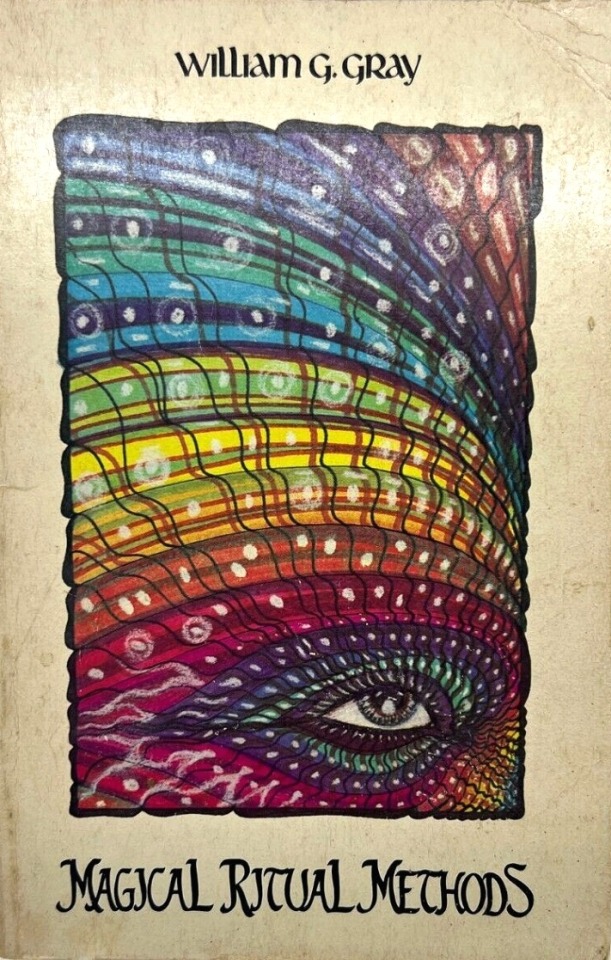
William G. Gray - Magical Ritual Methods - Samuel Weiser - 1980 (cover by Alden Cole)
#witches#magicals#occult#vintage#magic ritual methods#samuel weiser#william g. gray#magical#ritual#methods#william gordon gray#alden cole#1980
14 notes
·
View notes
Text
lmao so I'm up on the king's scaffold and the executioner leans in just before he raises the axe to take my head off and whispers that he's always had a crush on me and thinks it's a shame he'll only get to hack up such a pretty neck once. but the joke's on him cause I'm wearing a resurrection amulet and I can't seem to stop getting caught corrupting the nuns in the local convent, so I'll definitely be back
#fantasy kink#medieval kink#magic kink#fantasy nsft#medieval nsft#queer nsft#t4t nsft#malin text#guy who learned about the rituals for various torturous execution methods from antiquity today voice: hey wanna hear a fun fact
23 notes
·
View notes
Text
Learn How To Properly Cast A Circle
How to Cast a Circle: A Step-by-Step Guide to Witchcraft Are you interested in practicing witchcraft and want to learn how to cast a circle? Casting a circle is a fundamental technique in witchcraft that helps create sacred space for rituals, spells, and other magical workings. In this guide, we will take you through the step-by-step process of casting a circle, providing you with all the…
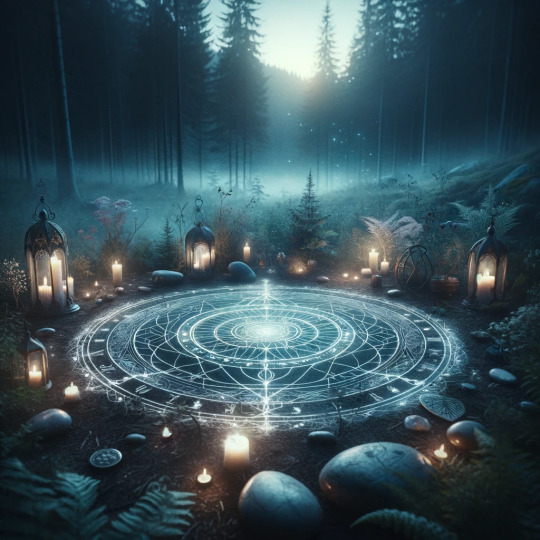
View On WordPress
#Ancestor communication#Athame#Centering methods#Chanting and ritual#Circle casting#Circle dissolving#Circle rituals#Cleansing rituals#Closing rituals#Divination Practices#Elemental invocation#elemental magic#Energy grounding#Energy raising#Energy Work#Grounding techniques#Magic circle#Magical Practices#Meditation in witchcraft#Protective boundaries#Purifying practices#Ritual baths#Ritual guidelines#Ritual intentions#Ritual Preparation#Sacred Space#Smudging#spellcasting#Spiritual communication#Spiritual Growth
14 notes
·
View notes
Text
Runes of the Day: 10/14/2023
ᚹᛞᛖ ─── ・ 。゚☆: *.☽ .* :☆゚. ───
ᚹ Wunjo Reversed- Unhappy time, anxiety, things are not going your way, tension or misunderstandings, blockage. You might not be in the right headspace, so avoiding making important decisions right now would be wise. Go decompress and focus on things that make you happy, and then you can come back to tackle any problem with a clear and calm mind.
ᛞ Dagaz- Daylight, success, hope, breakthrough, transformation, balance. Stay optimistic and focus on the positive as much as you can. Seek balance in life or on how you approach the situation. Spiritual growth is in sight, as you communicate with divine energies.
ᛖ Ehwaz Reversed- Lack of faith, lack of momentum, feeling restless, not the best time to travel, escapism. Step back and take a better look at how you have been approaching things. Avoid making important decisions until you have regained your confidence. Also. it would be wise to avoid traveling right now--unless you have to, then take some extra precautions and don't let the interruptions get to you. It is best that you don't avoid inner work (like shadow work, therapy, eating healthy, self-care) through escapism (substance abuse or anything mind-numbing).
─── ・ 。゚☆: *.☽ .* :☆゚. ───
#grimoire#baby witch#freyja#green witch#hedge witch#pagan witch#paganblr#divination#witch tips#altar#rune magic#rune reading#futhark runes#norse runes#runic magic#ritual#rune spread#rune readings#divination methods#divine feminine#divination readings#divine wisdom#dagaz#ehwaz#wunjo#divination reading#divination tips#daily runes#daily readings#baby witch tips
6 notes
·
View notes
Text
#Bagla Pratyangira Kavach#Bagla Pratyangira Kavach mantras#Baglamukhi Pratyangira protection#How to wear Bagla Pratyangira Kavach#Bagla Pratyangira Kavach benefits#Powerful Pratyangira shield mantra#Baglamukhi Pratyangira spiritual armor#Bagla Pratyangira negative energy protection#Pratyangira Devi kavach ritual#Baglamukhi shield against black magic#Bagla Pratyangira Kavach for enemies#Tantra Pratyangira protective shield#Bagla Pratyangira Kavach yantra#Pratyangira Kavach energize method#Baglamukhi protection mantra authentic#Maa Pratyangira shield benefits#Bagla Pratyangira Kavach consecration#Vedic protection Pratyangira shield#Baglamukhi Devi Kavach power#Pratyangira spiritual armor effectiveness#Bagla Pratyangira Kavach Sanskrit text
0 notes
Text
Writing Worksheets & Templates
will update this every few weeks/months. alternatively, here are all my tagged Writing Worksheets & Templates
Chapter Outline ⚜ Character- or Plot-Driven Story
Death & Sacrifice ⚜ Magic & Rituals ⚜ Plot-Planning
Editing: Sentence Check ⚜ Writing Your Novel: 20 Questions
Tension ⚜ Thought Distortions ⚜ What's at Stake
Character Development
50 Questions ⚜ Backstory ⚜ Character Creation
Antagonist; Villain; Fighting ⚜ Protagonist & Antagonist
Character: Change; Adding Action; Conflict
Character: Creator; Name; Quirks; Flaws; Motivation
Character Profile (by Rick Riordan) ⚜ Character Sheet Template
Character Sketch & Bible ⚜ Interview your Character
Story-Worthy Hero ⚜ "Well-Rounded" Character Worksheet
Worldbuilding
20 Questions ⚜ Decisions & Categories ⚜ Worksheet
Setting ⚜ Dystopian World ⚜ Magic System (AALC Method)
Templates: Geography; World History; City; Fictional Plant
References: Worldbuilding ⚜ Plot ⚜ Character ⚜ Writing Resources PDFs
all posts are queued. send questions/requests here.
#writing tips#writeblr#dark academia#spilled ink#writers on tumblr#fiction#creative writing#character development#character building#original character#character design#booklr#writing prompts#novel#worldbuilding#writing inspiration#writing ideas#bookblr#writing reference#writing prompt#writing resources
9K notes
·
View notes
Text
My advice as someone who has shifted many times
Got some really sweet comments on my last post, and I decided I should probably get myself over my fear of posting here. I just love everyone in this community, you're all family to me💚
First, and most importantly, coffee:

When I posted my introduction here, a couple of months ago, I felt like I was already quite an experienced shifter. 4 kids, the most amazing husband, a life outside of this reality longer than I lived within it.
Looking back on it now, more than 500 years later, 3 more kids, 4 grandchildren, I was almost like a baby still, and even at this moment in time, I feel like I'm only at the start of my journey.
However, for the people that know my tiktok account, I have shifted to a lot of places by now. Experienced immortality as a human, as a deity, I've seen different cultures practice shifting, and taught shifting to every single one of me and my husband's children.
My main purpose in coming back here, is to help others achieve what I finally managed after years of trying. I want you all to pursue your dreams, and find the infinite happiness you so deserve.
So here is some advice:
Shifting itself is extremely simple. You want something, you get it. The concept of the reality that we're in doesn't allow for instant 'manifestations', but that doesn't mean you can't do it. It just means that, this reality by itself, doesn't have the rule of ''you desire something = you get it.'' That's where humans came up with the term ''manifestation,'' but it's simple really; you persist in wanting something, so you shift somewhere you have it. How easy that is can depend on the person, but every single one is capable of doing it, it's not technically any more difficult.
There are realities out there where, ''you want something'' does equal ''you get it,'' the term manifestation wouldn't even exist in those places, it's just as natural as it is for you here to feel as though you struggle attracting your desires.
I do not want to be rude to anyone, but there is no key to shifting. Anyone claiming they have the method to shift, or know the key to it, is overcomplicating it. Shifting is shifting, you don't need anything for it. Just existing, being aware, that's all you need to shift. HOW you do it, depends on the person. Assumptions, methods, intention, they're all tools to help you, but they're not the key.
You can shift while showering, while taking a dump, you can jump in the air and yell ''Yippie!!!'' to shift if you would believe that it works. An actual method? A joke method? There's no difference between them. The only real difference? You assume one to work, and one to not do anything, and that's where our limited mindsets are created.
I've seen so many different groups by now. People that shifted through meditation, through rituals, a group that would quite literally dive into a lake that they saw as magic, but also people that simply just, decided they wanted it, and shifted seconds later. They were raised with those beliefs, so they work for them.
And you here? You're raised in a society that tells you that you have to work for what you want, that a dream life is impossible, nothing is for free. And then you wonder why you struggle with shifting, why it's so hard to believe that you can do something so incredibly simple. Your struggles are valid, it is not your fault.
As an awareness you're so much more than the 3d, you're so much more than the body or brain you're aware of. You're simply a guest in this body, until it expires or you choose yourself to move on, but that doesn't take away that while you're here, you have to deal with your experiences, memories, and taught mindsets from this place.
That's why, the biggest advice I can give you, is to listen to yourself. Not society, not other people, no one who tries to tell you that they know ''the way.'' If someone's method aligns with you, that is amazing, and definitely put it to practice. But don't force yourself to go through methods and practices that don't feel right for you. If you dread doing it, it's not for you. Find something fun, something that fits your routines and beliefs.
Remember that time has no meaning. 5 days, 5 months, it's not going to matter in 3000 years. Literally nothing can stop your existence, nothing that could happen to you in this reality can ever stop you from existing.
There is no pressure, eternity is waiting for you, be kind to yourself. You are exactly where you're meant to be. It doesn't matter how you shift, so don't make it a chore. Script, create scenarios, daydream, make up your own rituals or find the most fun ways to set intention. You don't need hour long methods of counting, starfish positions and difficult affirmations. Your desires are already heard, your subconscious already knows where you want to go, so enjoy the ride until you get there💚
#reality shifting#shifting#shiftblr#shifting blog#shifting community#shifting motivation#shifting realities#shifting methods#shifting stories
2K notes
·
View notes
Text


we were always going home ,
yes, i have shifted, more than ten times, if you’re the sort who counts miracles like matchsticks or notches on a headboard. i am not. i do not tally my miracles like debts to be repaid. they arrive not as triumphs, but as returns. familiar. like a song i almost forgot i knew until i was humming it again, accidentally, under the breath of my dreaming.
i do not care if you believe me. i say that without spite. belief was never a prerequisite for truth. you do not have to clap for the moon to rise, nor bow to the ocean to be pulled under. reality does not ask for applause. it simply is.
i shifted after four years. four years of thinking maybe i was broken in some exquisite, cosmic way, cracked just wide enough to want, never wide enough to have. four years of collecting every method like seashells, pressing each one to my ear and listening for home. sometimes i heard static. sometimes i heard blood. sometimes i heard nothing at all.
there were nights i didn't think i'd live to see morning. i say that with the softest voice possible, not for pity, but because it's true. i don't mean metaphorical dark nights of the soul, i mean the real ones. the kind where your body's still, but your mind is clawing at the walls, begging for a window. the kind where shifting wasn't some spiritual hobby or escapist whim, but a lifeline. a rope thrown into the pit.
i don't know who i would've been if i hadn't believed. not the glowing kind of belief. not the pretty kind. but the cracked, ugly kind. the kind that crawls. the kind that gasps, "please, just let me wake up somewhere else."
so when i say i shifted, i don't say it lightly. it wasn't a party trick. it was a resurrection.
quiet. not cinematic. not some thunderclap of fate. it was a shift like how morning happens, slowly, and then all at once. i remember going to sleep in my room, wrapped in some terrible hoodie, the air stale with the smell of forgetting. and then, like a breath i didn't know i'd been holding: i am there. not will be. not want to be. not maybe one day. i am. right now. here. and there.
it didn't feel like magic. it felt like choosing god, even if you don't know who god is. like giving yourself permission to walk on water not because it's easy, but because the alternative is drowning.
the assumption wasn't loud. it was a hum. a bassline beneath everything. and the moment i tuned into it, the world bent. not to serve me, but to meet me. like it was always trying to.
this is how i got there: i assumed i was there. i used the law.
i wish i had something more elegant to offer. a potion. a spell. a hundred-counted ritual. i don't. i have only assumption. not the performance of it, but the private, unwavering kind. the kind that does not blink. the kind that plants a flag in the dirt and says, "this is mine, because i said so."
i said i was there. so i was. not overnight. not in a blaze of light. it happened like a thread slipping through the eye of a needle, one slow stitch at a time. i told the air around me that my dr was real. i told the silence. i told the toothbrush in my hand, the toothpaste cap i dropped on the floor, the moth blinking against the bathroom light.
i didn't have to fight for it anymore. i didn't have to prove myself worthy. desire is not a courtroom, and the universe is not a jury. i stopped begging. i started being. and slowly, the scaffolding of this reality dissolved.
this wasn't faith. faith is something you carry with trembling hands. this was certainty. this was sitting still long enough for the river to realise it already knew your name. this was recognising that shifting was not a door you unlock with the right key, but a room you have already lived in. the furniture remembers your weight. the walls still echo your voice.
i shifted because i remembered.
and i kept remembering. even when it felt stupid. even when it hurt. even when the forum girls sighed and the scripting girls cried and the cynics said i was lost in a fantasy. maybe i was. but so is everyone. some people just settle for worse ones.
this is what i know: you can get there too. you are not cursed. you are not exempt. the moment you stop performing belief and start inhabiting it, like a house, like a skin, like an inheritance, you will see.
it is not far. it is next. it is with. it is just beyond the veil of doubt, waiting to be spoken aloud like a name that's always been yours.
you do not have to be special. you do not have to be chosen. you do not need a voice in the sky or a star to fall at your feet. you only need to decide. quietly. daily. like it's brushing your teeth. like it's feeding the dog. like it's the most ordinary miracle in the world.
let it be that simple. let it be that unremarkable. you were never meant to earn it. only to remember it. only to open your hands and realise they've been holding the key the whole time.
assume. not with fear, but with fondness. not with hunger, but with homecoming.
and if you don't believe yet, pretend. not out of desperation, but out of reverence. act like you are there not because it will trick the world, but because it will tune you to it. reality doesn't respond to panic. it responds to presence.
so say the toothbrush is yours. say the air smells different. say the cereal tastes sweeter. say the light is warmer. say your name with a little more certainty. you don't need proof. you are the proof.
and do not ask yourself how again. ask when. ask what now. ask am i ready to walk through the door i've been holding shut with both hands all this time?
because the door is open. the light is on. your seat is warm. your name is carved in the table.
come back.

#shifting#reality shifting#shifting motivation#desired reality#reality shift#realityshifting#shifting realities#shifting community#loa tumblr#master manifestor#loassblog#loa success#loablr#loassumption#loass#loa blog#manifestation#manifesation#manifesting#instant manifestation#law of manifestation#how to manifest#shifting antis dni#shifting blog#kpop shifting#marauders shifting#reality shifting community#reality shifting methods#shifting advice#shifting consciousness
809 notes
·
View notes
Text



ASSUME IT, PERIODT.
Let’s get one thing straight—if you’re still out here scrolling through LOA posts trying to find that *one* magic trick to make your manifestations fall from the sky, you’re playing yourself.
The Law of Assumption is NOT some trial-and-error game, “Let me try this method, oh wait, maybe this one works faster” NO, that’s exactly why you’re stuck.
You’re treating this like some complex puzzle when it’s literally the simplest thing ever: WHAT YOU ASSUME TO BE TRUE, IS TRUE. PERIOD.
No rituals, no astrology charts, no begging the universe like an abandoned child. You decide it’s yours, and it’s fucking yours. Now, let’s talk about why y’all keep making this harder than it needs to be. Your reality is just a mirror of what you assume to be true. That’s it. No extra steps. No loopholes.
If you assume you’re broke, you’ll stay broke. If you assume your SP isn’t obsessed, he won’t be. If you assume life is hard, it’s gonna stay hard.
Reality has NO choice but to reflect your dominant beliefs, whether you get it or not. It’s like gravity, babe—it’s working 24/7.
And don’t come at me with, “But I’ve been affirming for weeks and nothing’s happening, does that mean it’s not meant for me?” SHUT UP.
Nothing is "meant" or "not meant" for you, this is YOUR reality, YOU make the damn rules. The only reason you don’t have it yet is because deep down, you’re still acting like you don’t.
You affirm, then spiral the second the 3D doesn’t show it in five seconds. And speaking of the 3D—YES, it’s showing the opposite right now because that’s what you previously assumed. Duh.
The 3D is literally just playback of old beliefs. Stop reacting to it like it’s breaking news. You wouldn’t dig up a seed every five minutes to check if it’s growing, so WHY are you doing that with your manifestation? Let it fucking marinate. The second you assume something is yours, reality has no choice but to match it.
The only thing delaying it is YOU—your doubts, your second-guessing, your “but what if” thoughts. If you KNEW your dream life was guaranteed, would you still be stressing? No. You’d be chilling, knowing it’s already yours. That’s the energy you need to be in—main character, of-course-it’s-mine energy.
And stop looking for “signs” like a lost wanderer. The only sign you need is your own damn belief. Angel numbers, tarot, moon phases, none of that controls your reality. YOU do (not completely denying that you don't need to see tarot readings, but don't be dependent on it for manifesting). So what’s the lesson? STOP MAKING IT HARD. You don’t need to “try” to manifest. You need to LIVE as if it’s already yours. The sooner you get this, the sooner you’ll be living your dream life instead of stressing over it. So assume it’s done, act like it’s done, and let reality catch up. Now go be delulu in peace, and don’t let me catch you stressing over your manifestation again. I SAID WHAT I SAID.



#law of assumption#shift#affirm and persist#loassblog#shifting community#affirm and manifest ���� 🎀✨ ִִֶָ ٠˟#loassumption#manifesting#loa blog#loablr#loa advice#loa success#loass#loa tumblr#shifting realities#shifting#4d reality#dream reality#reality shifting#desired reality#respawning#permashifting#realityshifting#voidblr#the void state#the void#voidstate#void#shiftblr#shifting consciousness
431 notes
·
View notes
Text
Sigil Magick: Illustrating Your Intent
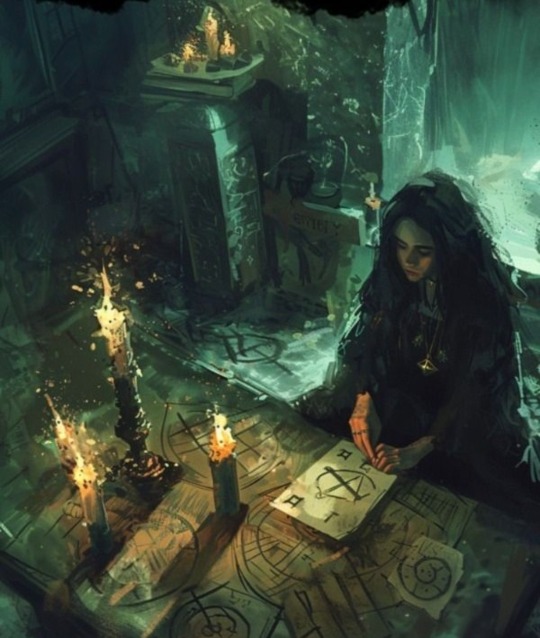
Sigils are a cornerstone of contemporary and chaos magick and function as keys to unlock the doors of reality and bend it to one’s will. These potent symbols serve as physical embodiments of one’s intentions, cast into existence through the fusion of art and willpower.
The crafting of a sigil begins with a clear and focused intention, which is then worked into a unique symbol through a creative magickal process. The magick practitioner inscribes deep personal meaning and style into their designs, making each unique to its artist. Sigils are ideal tools for manifesting your desires, imbuing objects with specific purpose and energy, protecting spaces, and communicating with the spirit world and should be used responsibly.
Origins
The practice of crafting sigils traces its roots to the ancient world but was modernized in the early 20th century by the works of Austin Osman Spare, an occultist and artist. He introduced the method of creating magical symbols by condensing letters of a desire into an abstract design. Aleister Crowley, too, influenced the practice by intertwining sigils with ceremonial magick, embedding them with a rich esoteric significance.
Some occult grimoires employ sigils as a means of contacting spirits, for example; Ars Goetia, The Book of Oberon, and Pseudomonarchia Daemonum.
Basics of Sigil Magick
Sigil magick emerges from the belief in one’s ability to manifest their focus into reality. Through a process of creation, a sigil becomes much more than mere ink on paper—it is the illustrated essence of desire. Individuals can use sigils as focal points for their will, empowering these symbols through meditation or ritual to enact change. The universe of sigils is vast and varied, types of sigils include:
• Pictorial Sigils: Intuitive symbols drawn from the subconscious
• Runic Sigils: Combinations of runic alphabets that resonate with specific energies
• Word Sigils: Derived from statements of intention, where letters are crafted into a unique symbol
Correspondences also serve a purpose in this class of magick, in order to help align one's intent to universal energies. As an artist crafts their sigil, they intertwine traditional symbols with personal significance, creating a bridge to the metaphysical world. Some relevant correspondences are:
• Numerology: Numbers carry vibrations that can enhance a sigil’s purpose.
• Zodiac Signs: Celestial influences infused to fine-tune the focus.
• Elements: The classic forces of Earth, Air, Fire, and Water lend their power to sigils, grounding them in natural harmony.
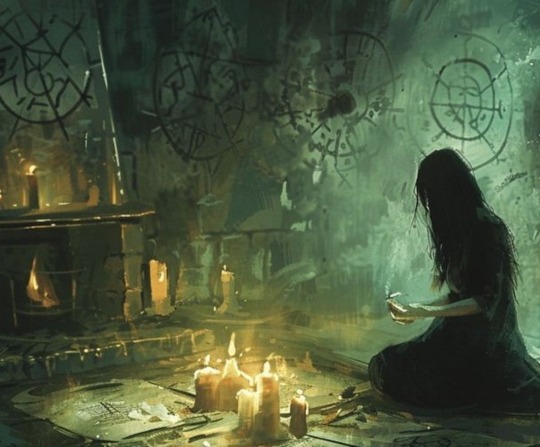
Sigil Creation
Before you take pen to paper, first envision your intent with clarity and purpose This may involve some deep introspection into the true nature of your desires. A precise intention lays the foundation for the sigil's power. Once ready, write out your intention and cross out any duplicate letters. From here a couple different methods can be utilized. Naturally you could always draw your sigils from pure instinct, creating spontaneous shapes to represent your intentions, but there are other techniques available.
The Wheel
This method employs a wheel to be used as a map for drawing your sigil. Simply start at the first letter of your intent and draw lines to each subsequent letter. Example:
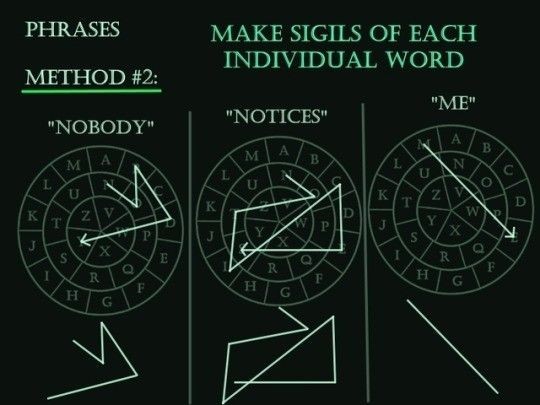
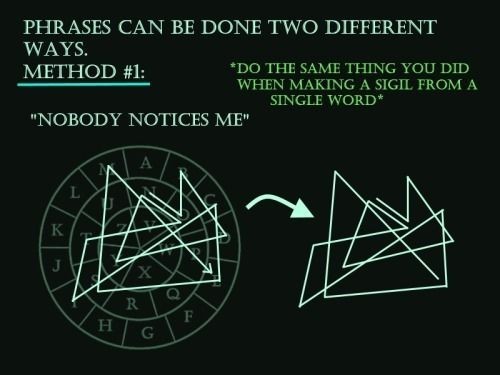
My Method
I make my sigils by breaking up the letters to create shapes. I will often decorate with extra shapes, symbols, and pictures as well. Here is a simplified example of my sigil creation process:
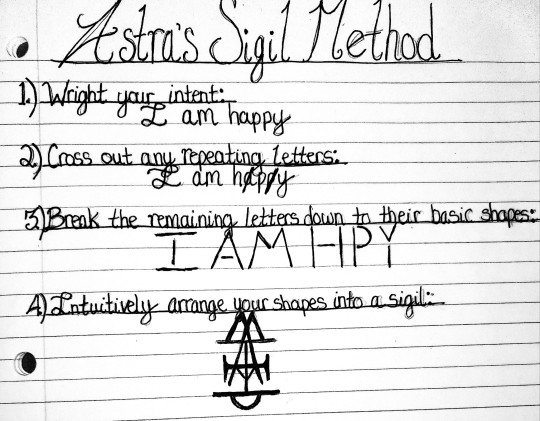
Next you must charge your sigil. Charging is the act of infusing the sigil with energy. The creator might enter a meditative state, focusing intently on the sigil while envisioning their intentions intertwining with the design. This act of focused concentration serves to embed the intention within the sigil, making it a beacon for the desired change.
Passive and Active Sigils
Intentioned sigils fall into either the passive or active sigil category based on how that sigil's energy is best utilized. Passive sigils are usually drawn on the body, item, or surface and then left alone to release their power over time. Active sigils involve some action to trigger the release of the sigil's energy, such as burning, burying, soaking with water/oil, and more. Some sigils can be used both passively and actively, but most will fall into one category.
Spirit Sigils
Many spirits and deities have sigils that represent them and these can be powerful catalysts for interacting with these beings. If the spirit you're working with doesn't have a sigil made for them (or even if they do) you can design your own symbol to connect with that spirit. Follow the same process, but instead of focusing on your intent, focus on the spirit/deity and connecting with it. You can even perform a ritual and provide an offering to invite the spirit into your space. This will allow you to draw divine inspiration straight from the source. Here are some examples of spirit/deity sigils, as well as some I created:
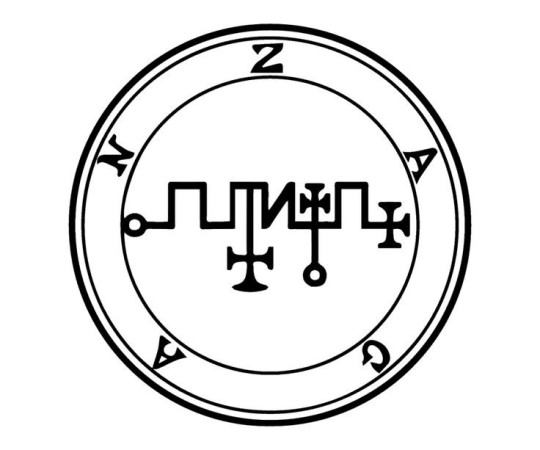

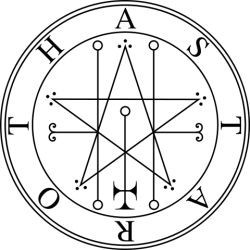
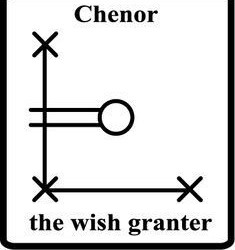
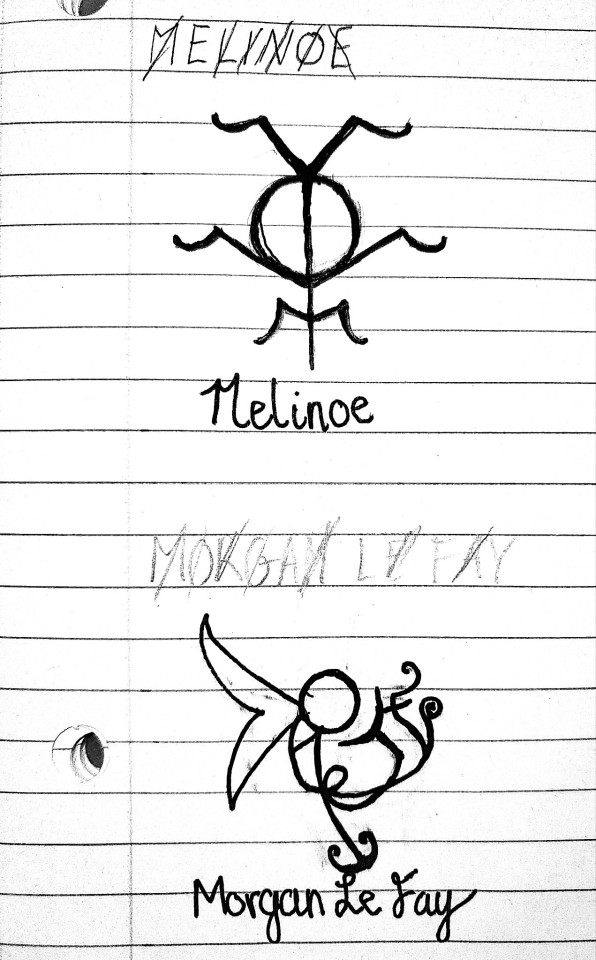
#magick#witch#witchcraft#sigil#sigils#sigil magic#sigil magick#chaos#chaos magick#chaos magic#chaos witch#satanic witch#lefthandpath#dark#satanism#demons#demonolatry#spirit work#spell work#spellwork#spell#spells#spellcasting#symbology#symbolism#symbols#eclectic#witchblr#witch community#pagan
578 notes
·
View notes
Text
Let's write about Jewish characters in dynamic ways- that make it clear "Yes this is us. Yes, we are living our lives with this happiness and ritual, and we love it. "
Like it's so easy to write about, to have casual observances of Judaism and cultural practices be in the background of stories. I'll write of the few examples I can think of in my frame of reference as a college student-
there's a mezuza in the doorway of a college kid's apartment. Whenever his friends come over, it's a reach for some of them to touch it because both he and the rabbi who installed it are 6 foot three. The others feel like a middle school boy slapping the ceiling as they try and reach for the damn thing.
Characters rush on public transport to get to a rabbi's house on shabbat. The train is due. There's a flurry of regrouping, then trying to call a missing friend to get there, and then the process of methodically hiding Magen davids and jewish objects because getting to shabbat dinner without a situation was an order from college Hillel staff.
A character is half-drunk at 2 AM at the convenience store but has to scan the list of ingredients on their chemically disgusting snack for gelatin.
Said character is prevented by her friends from only sustaining herself on 7/11 slushees "even though it's all kosher!"
There are references to the Purim incident constantly- it is never clarified what happened on Purim.
the hypothetical gang of characters are in the middle of nowhere on a grand magical adventure. The main character notices a mezuza on a door of a cabin, knocks on it, and has an in-depth conversation with the resident. Then, he waves his friends over. "Hey, guys! We have a place to stay tonight!" Because through the magic of Jewish geography, it was discovered that the grumpy old Jewish man in the woods is the grand uncle of one of his Jewish Day school teachers
A character who eats cheesy bacon bagels regularly on passover has a deep respect for jewish ritual items. He kisses the siddurim as they're handed back into a pile, he always kisses his kippah that he wears for ritual purposes of shabbats and minions. He's very careful with these objects and keeps on claiming dropping something He is observant, and he cares so much, but not in the "typical" way. Just... please show the nuance in practice.
The big "going out night" for our fearless college student isn't Friday but saturday night because of shabbat.
The stain on the rabbi's couch is not to be mentioned
A character keeps on mentioning the stain anyway.
Jewish goodbyes after any event take a minimum of two hours and that's why the gang is delayed on their journey to save the world .
I want more representation than characters in novels saying "haha I'm jewish but eat bacon and love Christmas!" in such flat ways. Please feel free to add more hypothetical ways of representation in the comments !!! About or inspired by your own life and experiences ! Let's make this post vibrant!
#fromgoy2joy thoughts#jumblr#jewish#jewblr#jewish tumblr#jewish conversion#jewish convert#jewish stuff#jewishness#jewish writing#tw antisemtism#one mention of#antisemtism#judaism#jew
1K notes
·
View notes
Text
Moon Magick

What Is A Moon Magick?
In many cultures around the world, practitioners have used the position of the moon, as well as the phases of the moon in their practice. Each phase of the moon is perfect for certain types of magickal workings. Not all witches depend on the particular moon phase. Many develop their own methods and techniques through trial and error to find out what works best. Those that do use the timing of the moon do so by choosing the moon phase most conducive to their magickal workings. This gives their magickal workings some extra lunar energy boost.
Correspondences:
Associated deities: Isis, Diana, Artemis, Morrigan, Holda, Nyx, Nephtys, Sedna, Lilith, baba, Yaga, Kali, Aphrodite, Freya, Ishtr, Hathor, Selena, Oshun, Perspephone, Flora, Cerridwen, Gaia, Epona, Yemanja, Rhiannon, Khonsu, Inanna, Hecate, ...ect
Animals: owls, rabbits, wolves, deer, cats, moths, bats, spiders, raccoons, opossum, cows, frogs, dogs, crabs, whippoorwill, panther
Crystals/Stones: moonstone, selenite, obsidian, silver, mother-of-pearl, aquamarine, gold beryl, topaz, emerald, clear quartz, coral, pearls
Moon Associations: Shadow work, Protection, Meditation, Journaling, Introspection, Strength , Love, Beauty, Manifesting, To attract new things, Purification, Letting go, celebrate your accomplishments, letting go, goal setting, banishing
Plants and Herbs: vervain, moonflower, jasmine, lemon balm, cabbage, camellia, camphor, chickweed, moonwort, gardenia, grape, lemon, passion flower, turnip, potato, pea, cucumber, pear, peach, willow, poppy, mountain ash, mango, wallflower, rowan, cactus
Moon Phases
New Moon
This is the crescent Moon when see the first peak of light, this is a time of newness, the beginning of relationships, the beginning of a new venture, the energy of this phase promotes new beginnings on any level. This is the time for change and for being open to, and looking for new opportunities, tilling the soil and planting seeds actually, and the seeds of ideas.
Waxing Moon
The Moon is beginning to gain strength as it grows in size, and goes from a new to a full Moon, this is a perfect time for growth and increasing things, growth within a relationship, financial growth, a time for learning and gaining knowledge.
If someone is thinking about pregnancy, this is a time of fertility, and it is an exceptional time for communication, in a business matter, or within a relationship. This is also an auspicious time for any legal matters, especially those where finances are concerned, if a healing spell, or healing of any type is needed, this is the time.
Waxing Gibbous
During the phase of the Gibbous Waxing Moon anything to do with increase is compatible; this is a good time for minor magic as the lunar energy is waning.
Full Moon
The full Moon is the most powerful phase, this is when the Moon is seen in its glorious fullness, this is a time of enlightenment and heightened psychic awareness. It is a time when everything comes together, it is a time of ideas, also a time of commitment, to a person, idea or project. It is also a time of family, and or friends coming together, any spell is well aspected during this phase of the Moon.
Waning Gibbous
The Waning Gibbous Moon is suitable for rituals associated with letting go, and banishing, if it is time to clear out the old and prepare for the new, this is the Moon phase to spell craft with.
Waning Moon
As the Moon decreases in size, it goes from full to dark, and this is a time of letting go, it is also a time of completion. If you have been wanting to change something in your life, this is the perfect time.
It is also a time of ending anything that doesn’t work in your life, this may be a habit, a relationship, or paying attention to issues associated with legal matters, this is a time to pay attention to anything that you have been procrastinating about
Moon Water
Moon water is very similar to Sun water. But rather than being charged by the sun, it’s charged by the moon. Moon water can be useful for helping boost the energy of a spell, to help an intention grow, protect and to cleanse a space.
Instructions:
Get a glass bottle
Fill it with any type of water.
Leave the bottle with water out in the moonlight for a whole night.
#thecupidwitch#witchcraft#witches#witch#witchcore#grimoire#witch community#witchblr#green witch#pegan#wiccablr#wicca#occult#book of shadows#magick#peganism#moon#moon phases#baby witch
650 notes
·
View notes
Text
the narrative that could have been
Having mulled over the game for a couple of days I have realised that the main problem for me is that Veilguard is good based on the premises they ultimately choose, but not based on the set up and promise of what was there before. I know this isn’t a unique take by any means and yes it’s all about the Evanuris and the Veil and Solas.
Replaying really emphasises how incredibly little the game convinces me of its original main quest - to prevent Solas from doing his ritual. This is a problem as a long-term player because for three games we’ve had build up for a great crescendo tackling the overarching themes of the (restrictions and oppression of) magic, of tears in the Veil, of religious tyranny and oppression based on myths about the Black City and the temptations of flawed humans, we’ve seen and deconstructed the elves quite a bit, we got started on the dwarves and in DAI your Inquisitor can openly ask Solas if it wouldn’t be better if the Veil came down because then spirits wouldn’t be separated from the living and risk becoming demons. Cole, whose function is to reflect the plot, talks endlessly about the old songs wanting to be sung again, about how it hurts to be cut off from part of yourself, how the templars feel it, how the mages feel it, how the elves and the dwarves feel it. The Veil as a prerequisite for life has been deconstructed, the Fade demystified, the gods have mostly fallen. The Veil as an actual wound inflicted on this earth has been presented as a theory and not been convincingly rejected by the narrative.
The game actually gives no explanation whatsoever as to why the Veil coming down would be worse than what Rook causes in the beginning and what the escaped gods then do to the entire Thedas. The entire south falls to the Blight because Elgar’nan and Ghilan'nain are let loose. The Wardens are more or less wiped out. There’s enormous political turmoil. The game gives us Solas saying “thousands” would die when he brought the Veil down, but that he had a host of spirits there to help. (Yes, I know, his sole function in this game is to Trick and Deceive so who is to say if he’s lying, HUH, but even so, THE ENTIRE SOUTH FALLS TO THE BLIGHT IN ROOK’S VERSION OF THINGS.)
The game puts emphasis on Solas's questionable methods and past horrors but it doesn't ever explain why his goals are despicable here and now. It doesn't convince us that tearing down the Veil with lots of safety measures in place and after considerations is a bad result, all things considered - save for Varric’s initial yelling about demons. (We even learned in DAI that the Veil itself creates demons because it restricts the passage of spirits, come on.) Because three games have suggested it's not, not ultimately. Trespasser especially nuances this, just as it nuances Solas’s view of this current world state. Right after his long nap he would have nuked it all, I’m sure, but the whole point of character arcs is that things happen in them and what happened to him is that he was shown layers and angles he had not considered and adjusted his mindset and ultimately his plan accordingly. That is where DAV should have picked it up. That's where the build up was headed. But, now he must serve the narrative solely as the God of Treachery and Lies which means that previous build up is washed away for the most part. (In no way do I think he is OOC in DAV, I just want to point that out so nobody thinks I’m a sappy fangirl or whatever. I think he is perfectly in tune with his inner Dread Wolf, but that is also all he gets to be, because of the narrative, and I’m always much more interested in when roles and personas clash.) Again. The main problem is that the narrative cannot explain why bringing down the Veil would be the worse option than the shit we see unfold on screen. Instead it gets a bit lost in the past. And I have Issues with that, as well. Like, the dumbing down of the war against the Evanuris. The war that started because the leaders of the rebellion - who previously had to carry out terrible orders so the Evanuris, the upper crust of the Elvhenan, could play gods - decided that the Evanuris was a threat to them all. And the game gives us what, a depiction of how the rebellion ended up crossing lines, too? No shit.
Like, I am fully on board with the individual theme of regret on Solas’s part and he ought to be wrecked with guilt but I wish the game could be less all over the place with what sort of things he ought to be wrecked with guilt over. Saying fuck you to the Evanuris is the best and brightest of his character, I suppose I just don't want it dragged down to the same level as him breaking the Titans. I suppose I would have wished for a narrative that also worked on a systemic level when depicting things like, you know, war and revolutions and subjugation. But we don't have that, because DAV is only about personal choices. The Lighthouse crew flippantly writing the hierarchical and violent power struggle off as being about love and betrayal is on my shitlist forever.

No, Taash et al, it was not about pussy, it was about feeling compelled by superiors to commit heinous war crimes and being lied to about the actual purposes of your damn war in the first place. The elves shouting at Elgar’nan and Mythal in this painting aren’t driven by love and sex they have been lied to by their ruling class. It was never about freedom or ending the wars, it was always about Elgar’nan jerking off to ultimate godhood. The writing even suggests betrayal here is to be understood as Netflix drama betrayal, maybe some juicy porny plot but it’s ABOUT THE BETRAYAL OF THE ELVES BY THEIR OWN KIN. ((ETA: I would have wanted my Dalish mage to be allowed to be furious, NOT WITH SOLAS, but with the fucking Evanuris for betraying her people and being so fucking vile that the only option that remained was to create a world where she's a second-class citizen. I would have wanted the game to recognize that not all causes are equal and that Elgar'nan's cause for godhood was objectively more vile than Solas's cause for freedom because as it stands now, there are some really iffy vibes of "both sides are equally bad" and other things authorities tend to say when comparing destructive regimes with uprisings.)) I’m sorry, this shit hits me on a personal and political rage level.
I also can’t help but mourn a game where the Trickster God fulfilled his trope’s duty and shook the stagnation apart with his actions - for good or ill, the way trickster gods are wont to do - and where Rook was tricked into helping and then, a more complex game about its consequences could have unfolded. The Evanuris could still have been the bad guys, if they wanted big villains frothing at the mouth. There could still have been numerous unplanned consequences, like all of Solas's plans have. Maybe other ancients awake as well. Maybe ancient evils who aren’t elves, who knows. Point is - the Veil should have come down, at least in some form, at least in some outcome. THAT is what they've been building up to. In this game that never was, Rook could be an actual interesting character where we could mold her as either accepting of this trickster role (which fits perfectly for a blank slate with no ties) or set to overturn it and enforce status quo, with some vanilla option in the middle. Maybe the Veil doesn’t come down until the very end of the game, ancient magic takes time after all, maybe a lot has happened by then. But ultimately, Rook’s choice in the end should not have been about siding against Solas because he’s lying to you or because he did horrible things in the past or siding with him because you want him redeemed. The narrative should have provided those options either way. The narrative should have been brave enough to suggest that hey, maybe Solas isn't wrong at all - his methods maybe, but his goal, no. If they truly wanted mirrors between Rook and Solas, Rook should have tackled the issue of actively bringing down the Veil herself, not because it's a roses and sunshine-outcome but because it might very well be the lesser of two evils. Gods, that would have been interesting. It should have been a choice about what sort of world Rook and the Veilguard wants to see in the future. It should have been about the people, the world, not how angry Rook is that an ancient elf has tricked her.
That would have been the game I wanted to play. This story doesn't really give anything new to the world of Thedas, which a world without the Veil would have. It accomplishes closure for our favourite trickster god and bless them for that, but as for the plot and the world-building it ends on a meh because the narrative isn't about the people unless they're brought up as being endangered. This is why I can feel satisfaction regarding the thematic conclusion to certain character arcs, the trickster becomes the healer with the bloodiest hands, the wolf submits willingly to his trap and so on and so forth, and I can have fun with the characters and their arcs but also really mourn the game that was there, in subtext and build up over three previous games and in several tie-ins.
431 notes
·
View notes
Text
How To Read Runes | A Modern Witch's Guide
Unlocking the Ancient Wisdom of Runes for Divination and Personal Growth Introduction Welcome to the modern witch’s guide to reading runes! In this comprehensive guide, we will explore the fascinating world of runes and learn how to harness their ancient wisdom for divination and personal growth. Whether you are new to the world of witchcraft or an experienced practitioner looking to expand…

View On WordPress
#Casting Runes#Charging Runes#Cleansing Runes#Combining Divination Systems#divination#Elder Futhark#Ethical Divination#Historical Runes#Intuition Development#Intuitive Readings#Magic Practices#Meditation with Runes#modern witchcraft#Norse Tribes#Personal Growth#Psychic Abilities#Rituals with Runes#Rune Cards#Rune Casting Methods#Rune Interpretations#Rune Meanings#Rune Readings#Rune Spreads#Rune Stones#Runes#Runes for Guidance#Runes in Magic#Runic Alphabet#Runic Divination#Runic Magic
0 notes
Text
6 Types of Protection Magick

There are many ways one can do protective magick. In this post I'll be going into 6 of the most common and accessible ones!
Please understand that even one "protection magick type" can be done in an infinity of ways, some of which are closed to certain practices.
Disclaimer: based on my experience and research. I don't claim to know all truth. Further study is encouraged!
_________________♡♤◇♧_________________
#1 — Magic circle

The magic circle consists of creating a protection and delimiting a sacred space for magic and/or ritual.
The magic circle is probably one of the most popular protection methods thanks to its encouraged use in Wicca. However, other traditions have made use of similar concepts, such as in the afro-brazillian Umbanda concept of "chain".
The circle can be physically drawn on the ground, delimited by the members inside the circle, or visualized.
Casting one is fairly simple since it can be done in different ways, either in groups or solitary practice. You can use tools such as wands, chalk or physical objects to draw it, but what matters most is intention and successful visualization.
Before casting a circle it's important to have everything you will need already within grasp and inside the circle, since once created it is advisable that no one leaves it until the work is complete.
#2 — Amulets, and Enchanted Items
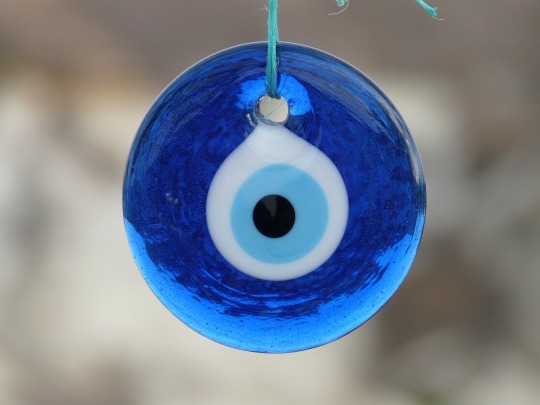
Enchanted Items are a very popular and effective form of magic, especially for personal use. These are often common objects that have been enchanted for protection.
They are often necklaces, rings and other jewelry since these are the most practical to carry around without suspicion. However, they can be any object.
Amulets can be created via enchanting, charms, or by asking deities and spirits to bless them with protective qualities.
The material and imagery used to create the talisman is also important in determining the kind of job it wants to do.
#3 — Sigils and other drawn Symbols

Sigils and Symbols can be used both for personal protection and for warding spaces. Here I am also including Runes.
They can be carved into objects, drawn upon skin and surfaces, or even tattooed.
However, before using any sigil, symbol or rune it is of extreme importance that you know exactly what they do, and know as much about them as possible. Especially if you plan on drawing them on your skin (either temporarily or permanently).
Unless specifically used only for protection purposes, inadequate use of them can lead to disaster. Even then, the type of protection they bring can vary.
For example, a protection sigil that works by hiding you from threats is different from a sigil that fights threats that come to you. It's important to set or to know how their protection work so that you do not come across unwanted results.
#4 — Prayer

My definition of praying: focusing on sending a message to a higher spiritual power, be it an entity, deity or energy.
Prayers are a great way of manifesting protection, though since you are asking for it to a higher power you must understand that it may choose to not grant it, or not grant it in the way you expect.
Plus, it is very important to know where you stand with this energy or entity. Do you work with them already? For how long? What is the nature of the relationship? Do you truly know them well enough to ask them for this? Is it really appropriate?
Cultivating a good relationship and having manners can be decisive factors for manifesting this sort of protection. Plus, it's always good to "give back" in some way. To receive something, something must be given eventually.
#5 — Affirmations and Visualizations
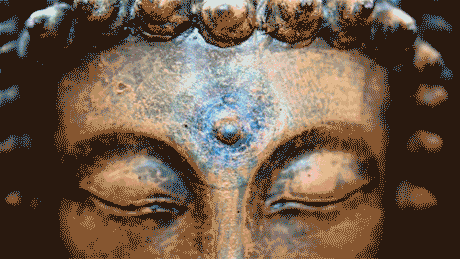
Words and the mind have innate power. Affirmations and visualizations are great ways to manifest protections because they rely only on yourself.
They are easier to do right if you use them together with other methods, or if you have physical representations of the work being done. To be successful one must focus, "feel" them happening, and maintaining that without help can be difficult. Frequent practice will help you get the hang of it.
There are also techniques that make affirmations and visualizations both more powerful and easier to accomplish.
#6 — Warding
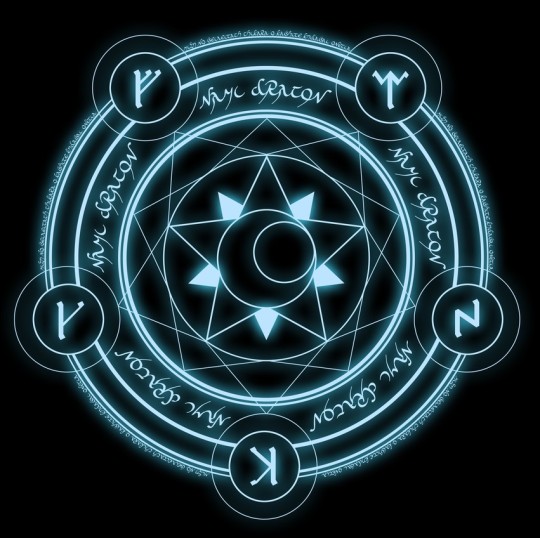
Warding is when you set up a semi-permanent protection in a specific place, such as your house.
It can be done in many different ways. One of the most common is to have an object or place designated as the "holder" of the ward, which should be well kept.
Warding will be more powerful if you are frequently cleansing the space and recharging the ward. Leaving it alone for too long can weaken in or make it lose its properties altogether.
Some plants are used for this kind of protection, since they (usually) stay in place, can be powerful magical allies, and you'll be checking on them often anyway. The ones usued are often those with thorns, threatening-looking leaves, or even poison.
Note: always be very careful about bringing poisonous plants home, especially if you have children or pets.

Conclusion
This was an overview of the most common types of protective magick. A lot of protection spells and works fall somewhere within these categories, or are a combination of them.
Each tradition has a certain way of going about spiritual protection, so if you are exploring an specific path, I encourage you to not only research about protection in general but to also look into what unique techniques your path has to offer!
Many blessings and thank you for reading! ♡
#witchblr#baby witch#long post#magick#paganism#spirit work#witch tips#witchcraft#pagan tips#baby wiccan#beginner wiccan#wicca#protection magic#warding#magic circle#pagan witch
2K notes
·
View notes
Text
Getting Back Into Your Practice

Sometimes life is shitty and your spiritual practice doesn't take priority. Thats okay. Here are some tips for how to get back into your practice once you're feeling up for it.
Cleanse and Clean Your Space This is defiantly the first think you should focus your energy on. This can take as long as needed and as intensive as you want or feel is needed. Spiritual and physically cleanse your space. Pick up items, open windows and start your cleansing method of choice.
Redo Wards and Protections Once you've cleansed its important to redo your protection. Cleanse to get rid of, protect to keep it away. Even if nothing has *hit* your protections and wards, its important to keep up to date on them being energized.
Keep Actives Low on Spoons Now that you've done the basics, stick to low spoon actives and slowly build from there. Even if you feel super energized and ready to get into it- you want to take things slow. This'll help you from losing steam..
Slowly Add Back In Your Daily Practice This is totally unique person to person, but dont expect to be back into your multi step daily routine right away. Add in each step one at a time, or slowly so you wont feel overwhelmed.
Come Up with a Ritual Youre EXCITED About You want to focus on the parts of witchcraft you love. Do something you've always wanted to try, something you always love doing, or anything that will make you excited for the working.
Pick a New Topic, Not an Older One Getting into your practice and going to an older topic might feel disheartening. Pick a new topic like astrology, plants, or an aspect of witchcraft you havent gotten too into before. Then go back to the older topic you left on.
Do Some Divination on What You Need Right Now Spend time with your spirit team, deities or ancestors and figure out what you should be focusing in on right now. Maybe you need more rest, maybe theres a ritual they want you to work on.
Remember You Dont Have To Do Magic Daily Dont put too much stress into doing something every single day. Take breaks. Youre still a witch.
I hope these helped. Remember to take things slow and dont let the pressure of getting back into it weigh you down. Magic is suppose to help not hinder.
#witchcraft#witchythings#pagan witch#spellwork#daily practice#witch tips#witch community#low spoons#getting back into your practice#witches#witchblr#green witch#the spectral cottage
4K notes
·
View notes